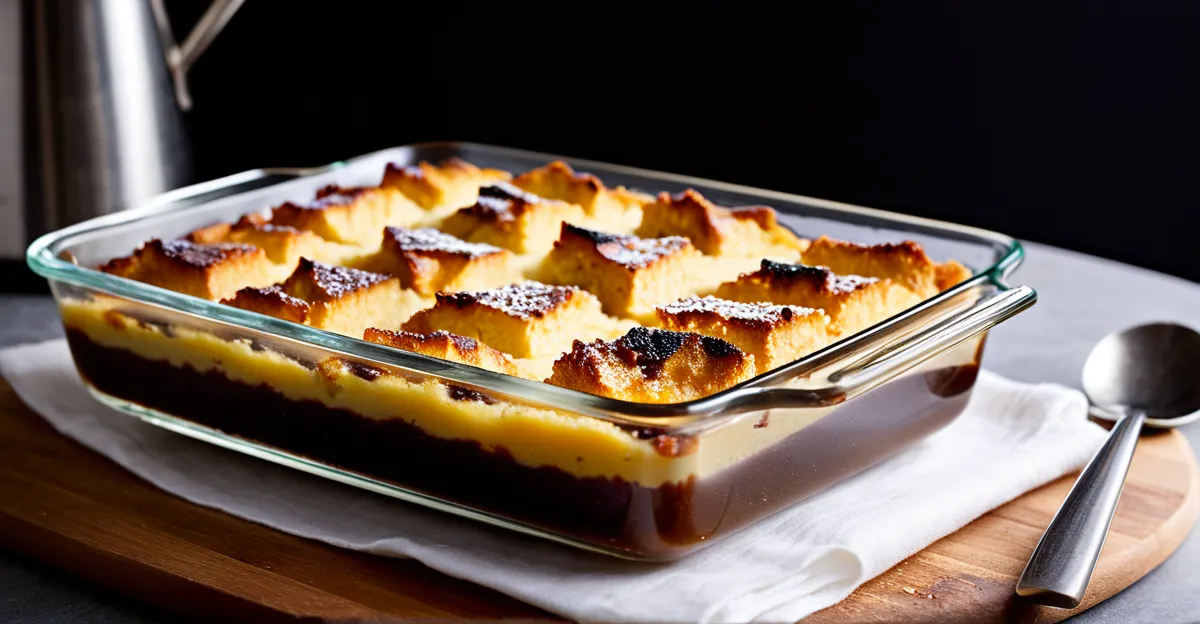Step-by-step guide to making creamy bread and butter pudding
Creating a bread and butter pudding with a lush, creamy texture begins with selecting the right ingredients and following a clear step-by-step approach. First, gather essential ingredients: thick slices of white bread (preferably slightly stale for better absorption), unsalted butter, eggs, whole milk, cream, sugar, and vanilla extract. Using quality dairy contributes significantly to the final richness.
Start by buttering each bread slice generously. This layer of butter not only adds flavor but also helps the bread maintain structure as it soaks in the custard. Next, arrange the buttered slices in overlapping layers inside your baking dish. Layering evenly ensures every bite contains a balance of bread and custard.
Have you seen this : How do you make a classic steak and kidney pie?
For the custard, whisk together eggs, sugar, whole milk, and cream until smooth. Slowly pour the custard mixture over the bread layers, allowing it to soak evenly. Letting it rest for 10-15 minutes before baking allows the custard to penetrate the bread fully, achieving that sought-after creamy texture in your pudding. This meticulous process is key to transforming simple ingredients into a luscious dessert.
Expert techniques for a creamy texture
Achieving a creamy bread and butter pudding starts with selecting the right bread. Use slightly stale white bread with a dense crumb, as it absorbs custard evenly without becoming mushy. Avoid crusty or thin bread; these can dry out or fall apart during baking.
In the same genre : How Has British Cuisine Evolved Over the Past Century?
For smooth, rich custard, beat the eggs gently and mix thoroughly with whole milk and cream. Sugar should dissolve completely to avoid graininess. Whisking custard just enough to combine ingredients prevents incorporation of excessive air, which can create bubbles and affect texture. Slowly warming the custard base before pouring can help even soaking and minimize curdling.
Baking requires careful timing and temperature control. Bake at a moderate heat (around 160°C / 320°F) to allow custard to set gently. High temperatures risk curdling, while underbaking leaves a runny texture. Insert a knife or skewer in the centre; it should come out mostly clean but with a slight coating, indicating creamy doneness. Letting the pudding rest out of the oven for a few minutes helps it firm up without losing moisture.
These expert custard tips and baking advice elevate a simple pudding into a luscious, satisfying dessert with a perfectly creamy texture.
Common mistakes and troubleshooting
A frequent bread and butter pudding mistake is ending up with a soggy or dry result. This usually happens when the custard either floods the bread or doesn’t penetrate enough. To prevent sogginess, avoid pouring too much custard at once; instead, add gradually and allow time for absorption. Using stale bread with a dense crumb also helps maintain structure.
Curdled custard is another common baking problem. It results from overheating or mixing at too high a speed. Custard should be gently whisked and baked at moderate temperatures (around 160°C/320°F). If curdling occurs, reducing heat immediately and covering the dish with foil can sometimes salvage the pudding.
Troubleshooting underbaked or overbaked pudding involves careful timing. An underbaked pudding will be too runny in the centre, while overbaking leads to dryness and tough texture. To check doneness, insert a skewer—it should emerge with a slight creamy coating, not wet custard or completely dry. Resting the pudding after baking helps even out texture and prevent dryness.
Understanding and addressing these common mistakes ensures your bread and butter pudding achieves that classic creamy texture every time.
Enhancing flavour and adding variations
Adding flavourful mix-ins transforms a bread and butter pudding recipe into a personalized treat. Classic options like raisins or sultanas gently infuse sweetness and texture during baking. For a twist, incorporate fresh or dried fruits such as apples, pears, or cherries—these add moisture and a pleasant contrast to the creamy base. Spices like cinnamon, nutmeg, or cardamom elevate the pudding with warm, comforting notes. Chocolate chips or a swirl of marmalade offer decadence and an extra layer of richness.
Adapting the pudding for dietary needs broadens its appeal. For a dairy-free version, substitute whole milk and cream with plant-based alternatives like almond or oat milk, ensuring the custard still sets smoothly. Gluten-free bread varieties work well to maintain the structure and texture without compromising flavor. Experimenting with these variations allows creating a creamier bread and butter pudding that suits different preferences.
For serving, a dusting of icing sugar or a drizzle of caramel sauce complements the soft custard perfectly. Pairing with whipped cream or custard sauce enhances richness and adds indulgence. These flavour tips and thoughtful add-ins encourage exploring diverse options to invigorate the classic dessert delightfully.





